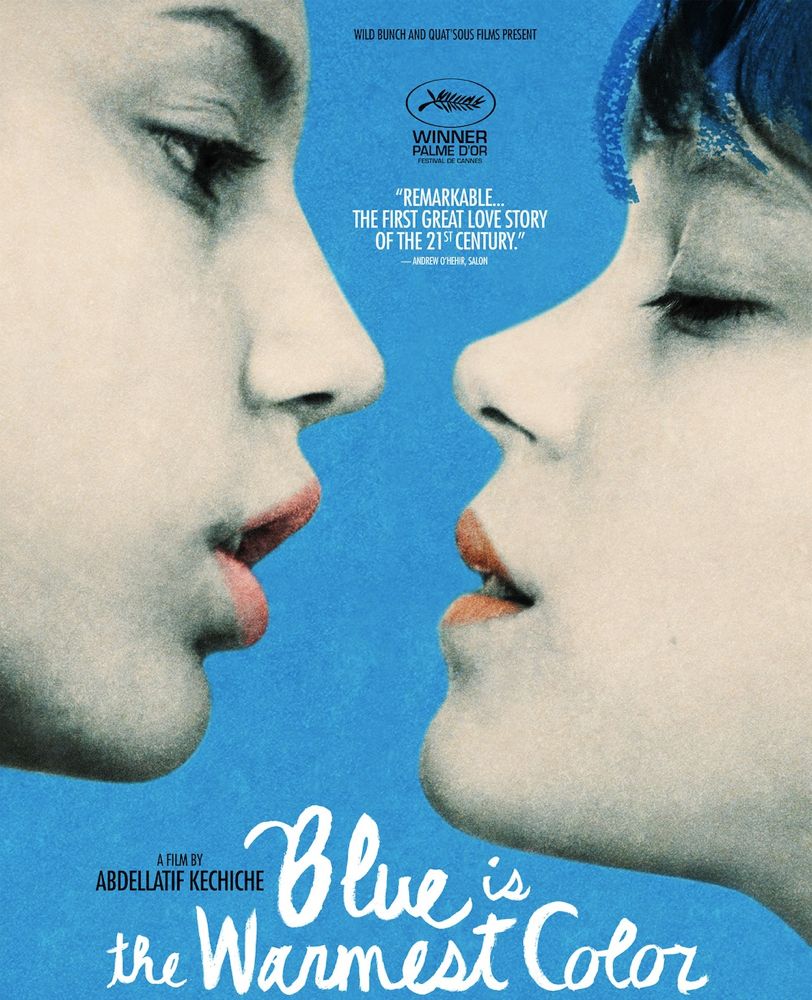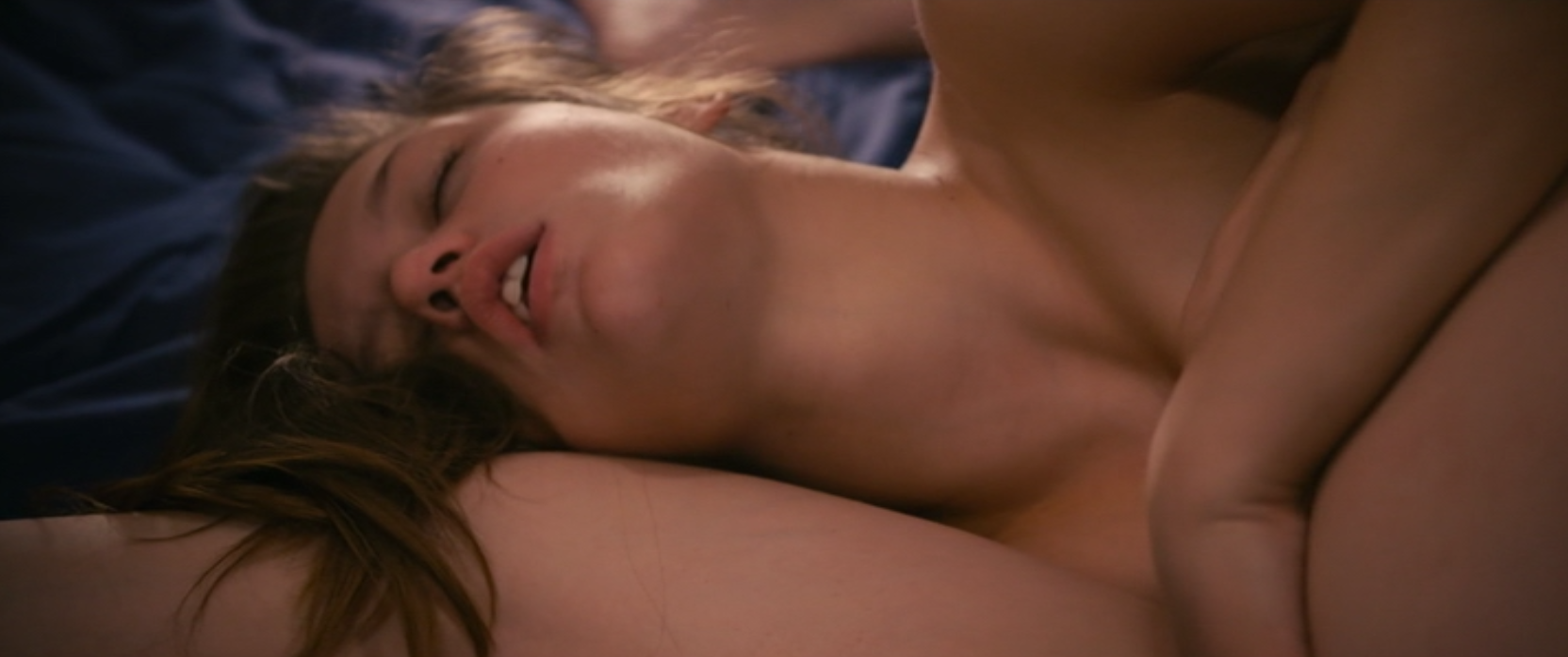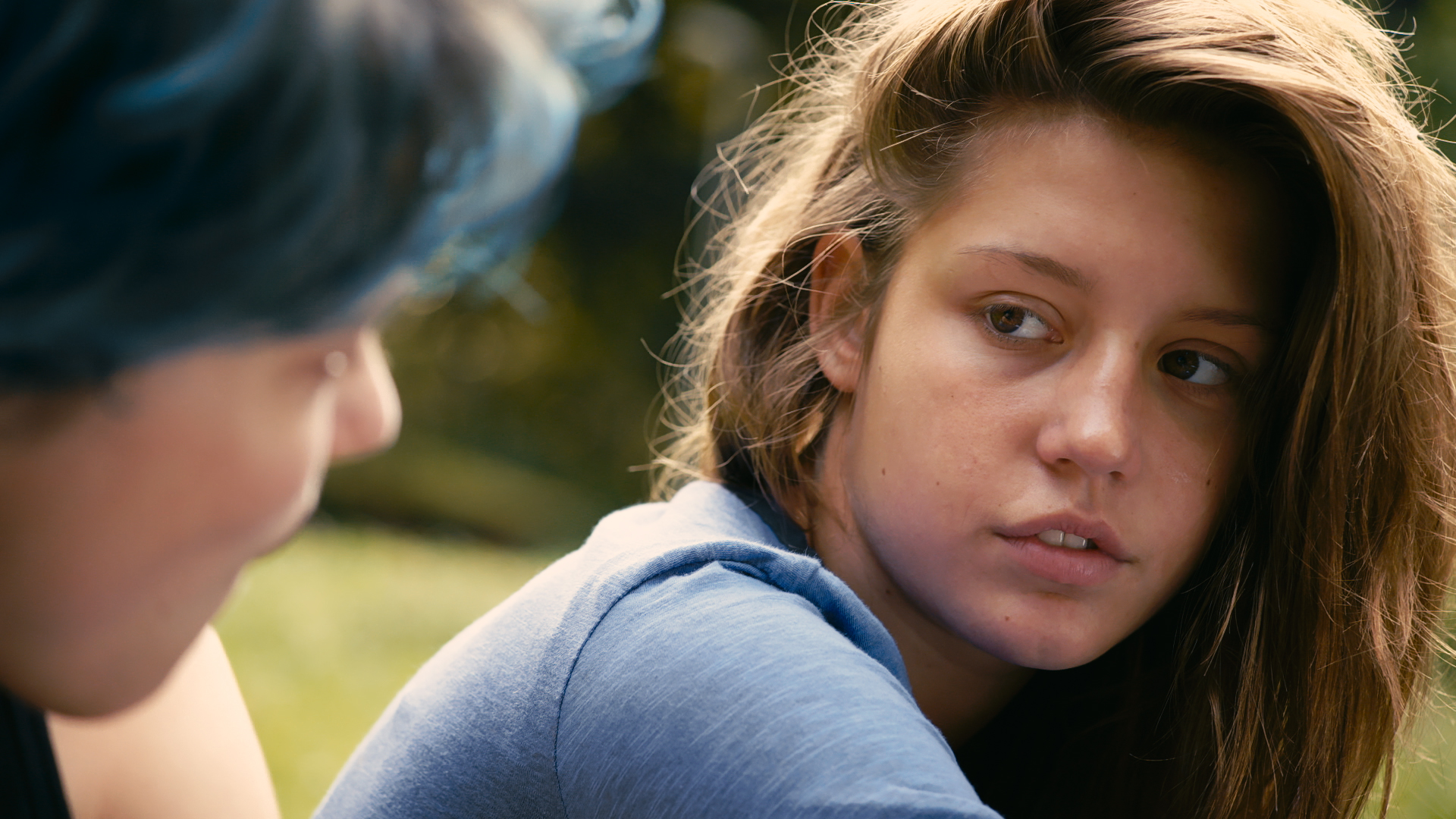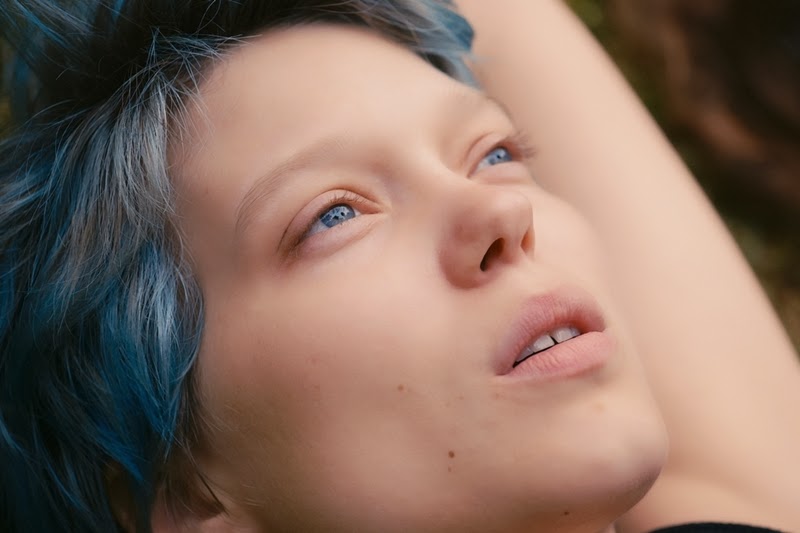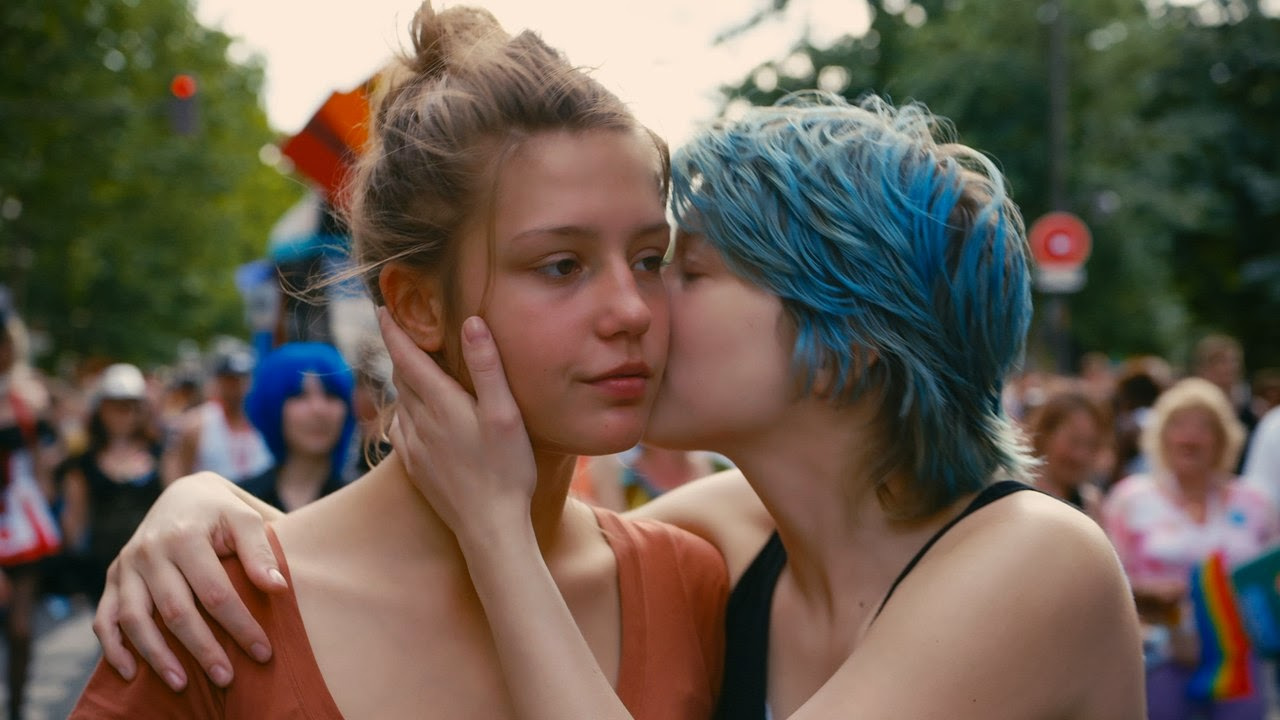This is a very modest film inflated in prominence and extended in length (to a running time of almost three hours) by several long and graphic sex scenes. The purpose of the sex scenes seems to be to tell us that . . . the characters have sex. Well, o. k., that’s clear enough.
I don’t mean to be prissy or prudish about it — watching beautiful naked young women thrash about in bed is always charming — but if you take those scenes away you have a very conventional story about young love which ends sadly and wistfully, as young love often does. It’s sort of a Lesbian version of The Way We Were, though without the grand passion, outside the bedroom.
What redeems it to a a degree and makes it worth watching is a brilliant performance by Adèle Exarchopoulos (above), 19 years-old when the film was made. She exposes herself fearlessly, both physically and emotionally, in the role, and she’s consistently riveting to watch.
After the film was released her co-star Léa Seydoux (above) said she felt the director had exploited Exarchopoulos and herself in the sex scenes, but the issue is bigger than that to me. Exarchopoulos was exploited artistically on every level by a director who asked more of her (or took more from her) than he had the talent to repay.
The film is not particularly interesting visually, and the story feels shopworn, apart from the Lesbian angle. During a garden party scene, there are images of Louise Brooks projected onto a wall as part of the party decor, perhaps attempting to link the film to some sort of venerable cinematic tradition. In fact, the film falls into the tradition of the ABC Afterschool Special — apart from Exarchopoulos’s stunning work it’s an Afterschool Special with an NC-17 rating.

